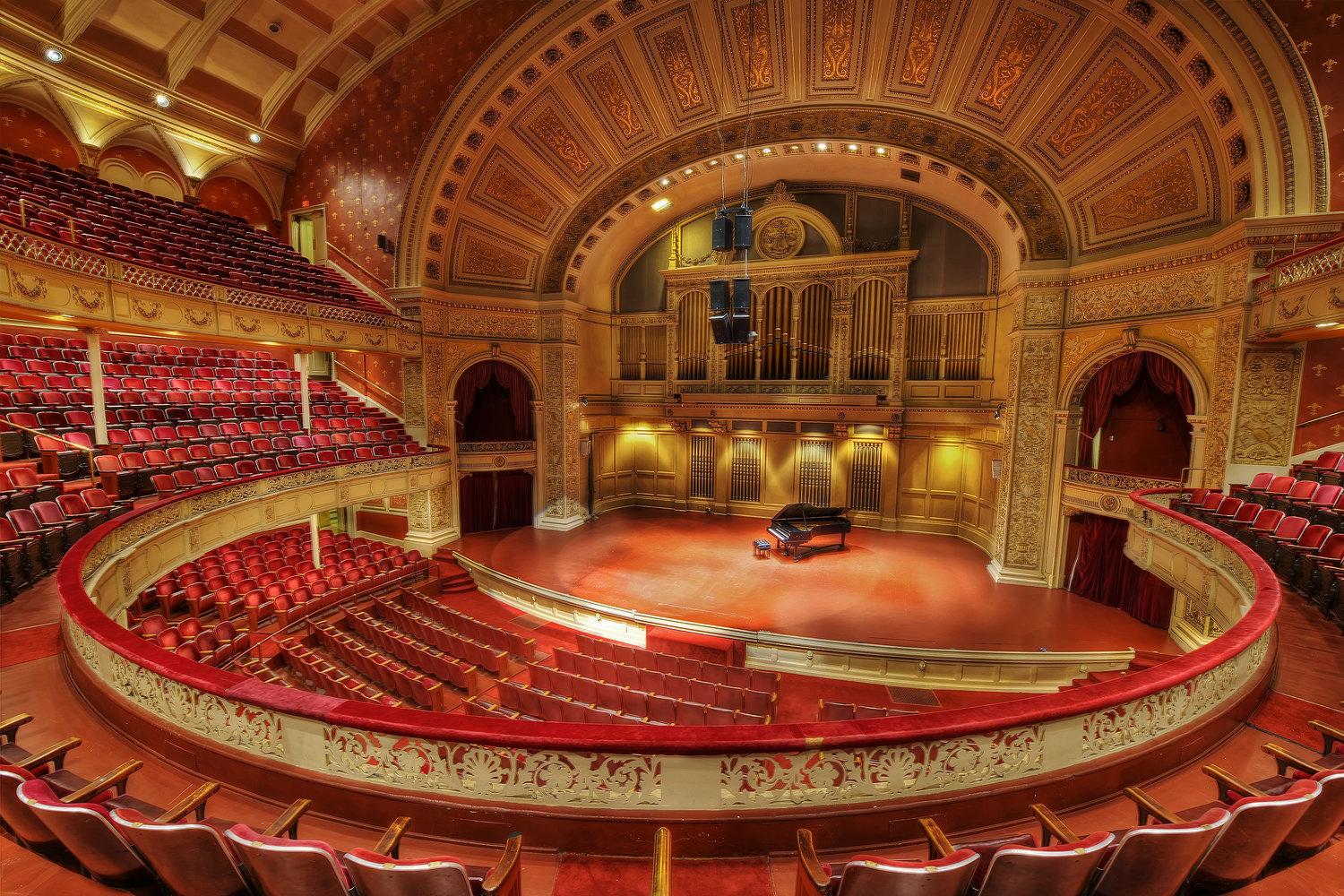Carnegie Music Hall


Carnegie Music Hall was built in 1895. Gifted by Andrew Carnegie as part of the “Carnegie Institute,” which includes the library, an art museum, a natural history museum and the music hall, each of these important buildings are connected to one another in a unique architectural compound of ‘steadfast companions’ in learning.
Carnegie’s purpose with the music hall and “Carnegie Institute” as a whole was to create a cultural hub where people of all backgrounds could learn, be inspired by, and absorb art, music, literature, and science. Before the institution of the connected buildings by Carnegie, these important aspects of learning were only enjoyed by the wealthy.
The entrance to the Music Hall is located on Forbes Avenue, next to Dippy the Dinosaur, an impressive 22-foot-tall statue of Diplodocus carnegii and tribute to the fossil skeleton house in the Carnegie Museum of Natural History that is adjacent to the music hall.
The hall welcomes its guests with an impressive and dramatic foyer that boasts a soaring 50-foot ceiling of gilded baroque décor, supported by pillars of marble from five different countries. The music hall itself boasts 1,928 seats, 22 of which are handicap accessible. In the hall an ornate metal balcony overlooks the elegant space. This historic rose and gilt theatre was built to be enjoyed by the every man and woman, however the architecture gives a certain elegance not often gifted to everyone.
The Carnegie Music Hall is a grand hall that was the first home of the Pittsburgh Symphony, and recently celebrated its 125th anniversary. With millions of visitors every year, the Carnegie Music Hall is a remarkable hall that represents the history of Pittsburgh, Andrew Carnegie (the philanthropist), and the neighborhood of Oakland.
Distance Unit:
Distance Unit: